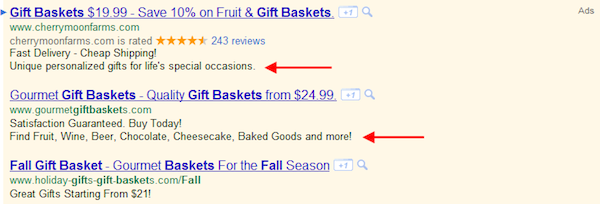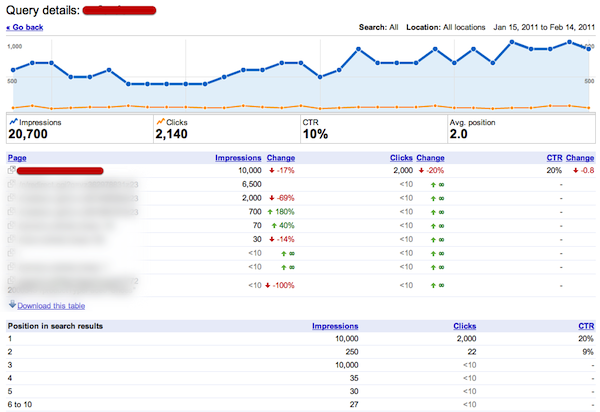A plethora of articles have been written about the convergence of SEO and PPC, most of them fairly elementary. I think everyone understands that, at least from a keyword level, each channel can (and should) inform and reinforce the other. That idea of “reinforcement” is a bit tricky, however.
Some studies have shown largely a reinforcing effect between organic and paid listings, except on brand queries where cannibalization is more likely to occur. These searches are often navigational in nature, so users are more liberal about clicking on paid results since they already know which brand they’re interested in.
The basic SEO and PPC integration points written about usually encompass the following:
- Use PPC keyword data to inform the organic content and optimization strategy. Use organic referral data to inform the creation and optimization of new PPC ad groups.
- Leverage PPC ad copies in organic snippet text to optimize click-through rates. Much easier to test what’s working in paid campaigns, which always put relevant messaging and a call-to-action forward, than to iterate and refine in organic placements.
- More visibility is better. A bigger footprint in search wins. Etc.
These are all useful points to think about. But to realize a competitive advantage, and to really integrate learnings from each channel, we need to dig a little deeper.
Toward an Understanding of Practical SEO PPC Integration
Much of this is still being discovered. There aren’t best practices developed around PPC and SEO synergies, aside from the fact that companies know the two sides need to talk to each other.
Conferences often have “SEO vs. Paid Search” sessions which, to be honest, are pretty silly. This isn’t a topic you can simply throw pointed remarks at, like “SEO is way better than paid search!” or “PPC is SO much more awesome than SEO.” Each is a unique, and complementary, online marketing channel.
Paid search spend doesn’t have to “take away” anything from organic search budgets. If there’s positive ROI, then there shouldn’t be a budget anyway (would you put a limit on giving Google $10 if they gave you $11 in return each time?).
Conversely, organic search doesn’t necessarily suffer because its ROI is inherently more difficult to capture. With solid strategy, benchmarking, and reporting, the ROI should be self-evident. Sure, it’s not as clean, but the data is there if you know how to get it.
Because organic search has traditionally taken the lion’s share of clicks on any given SERP (up to 80 percent, depending on the query and who’s doing the talking), recent trends show Google experimenting with the interface to encourage more clicks in paid results.
You can see where we’re headed: toward a more “organic” paid search experience (to borrow a phrase from the articles just cited). It’s in the best financial interests of Google to move click share towards the paid listings, which is in essence creating increased competition for attention on organic results.
This is an open topic, one that will continue to evolve. It’s also an area I’m keenly interested in exploring over the next few months. Here are a few areas that are of particular interest to me right now:
1. Landing Page Snippet Text in PPC Ad Copy
Google was recently spotted testing the display of snippet text from landing pagesin paid ads.
That text was taken directly from the landing page, directly tying PPC to SEO techniques. With the interface blending paid and organic together more than ever, and with changes such as the above showing where we’re headed, it’s only a matter of time before more PPC tactics are necessary for SEO (page load times anyone?).

Google placing organic snippet text in PPC ad text.
2. Focusing on Competitive Search
It’s amazing how little discipline is put toward reporting on branded and non-branded search as distinctly separate segments, with different implications.
On the PPC side of the fence, it seems pretty simple and clear that branded (often navigational) search is already ‘owned’ by the brand, so should not be leaned on too heavily when calculating the success of the campaigns. Sure, branded search is usually an important revenue driver. It just needs to be cleanly separated and tracked so as not to cloud the overall view.
Non-branded (what we call “competitiveâ€) search is where the true game is played. While branded search is largely driven by offline efforts, with little to no leverage to obtain more, competitive search is driven by demand in the category itself. As such, sales are largely incremental.
Slicing out a company’s competitive search share is often an excellent way to judge the healthfulness of their search marketing efforts. In fact, looking at the following data points represents an interesting opportunity for companies to find opportunities:
- For PPC spend, does the competitive search slice fall within efficiency targets?
- Does steady growth exist, in both SEO and PPC, for competitive search sales volume? It’s not enough for your SEO campaigns to drive traffic. They have to drive relevant traffic that converts. And the true mark of success, in my opinion, is incremental increases in competitive (i.e., non-branded) search traffic.
- Is there growth in the competitive slice as a percentage of site sales? In other words, how are site sales for competitive PPC and SEO segments faring as a percentage of total site sales? For large, established brands, you don’t necessarily want the PPC slice to be too high (every click costs you). But you also don’t want to be too dependent on SEO, especially if there are unsustainable tactics in play (algorithm changes happen!).
- How is growth in new customer acquisition through these segments?
There are several interesting insights that can come from these analyses. And going deeper to a more granular level, you can even look at terms being bought in PPC campaigns that don’t have strong visibility in organic search. And vice versa, you can identify competitive terms that have strong organic visibility but aren’t being actively bid in paid campaigns. I have yet to see this kind of gap analysis performed well, probably because the greatest insights will happen at scale and getting to that data is a tough problem.
3. Understanding Traffic Value
SEO can learn a lot from PPC, including how valuable unique queries are to the business and how efficient they are within organic campaigns. For example, does it make sense to rank No. 1 for “shoes” if the resource cost to get there is significant? There is much unknown and hard to quantify about SEO. How much spillover is there for head terms such as “shoes†to revenue from other queries, even brand related?

Paid search: traffic value doesn’t significantly vary by position.
For PPC, this is easy. Since traffic value doesn’t vary by position, as posited by Hal Varian and Google (and also discovered through RKG’s own testing), this is measurable and predictable.
Sure, the CPC landscape itself is highly mutable and impossible to predict. But we should be able to know, and predict, the value of traffic bid at an efficient cost.
Well, if traffic value in the organic results mirrors this behavior, and doesn’t vary by position, then can we place a marketing efficiency on queries like they’re PPC bids? If we know, for example, that when we spend $1 per click for “green mens wide running shoes†we get $3 in sales in our PPC campaigns, can we apply this to the organic segment as well?
Certainly, SEO work takes a long time to bear fruit. But there must be some sort of projection to justify the resource cost and apply a revenue estimate to the efforts.
I’m not positing that we should apply a PPC approach to SEO. On the contrary, actually, what I’m proposing is that we apply more rigor around the accountability of our SEO recommendations and the tracking of results.
This is really a technology problem. It isn’t a conceptual or strategic problem to be solved: we all know that this data would be powerful to have!
One problem is that we don’t really know anything about impression data in organic search. Sure, Google Webmaster Tools gives us a fleeting taste of impression data, for a sample set, but I’m a bit skeptical of its accuracy based on everything else we get from GWT. The toolset is fantastic. I only question the accuracy of the data provided, based on Google’s own disclaimers.

Wouldn’t this be sweet integrated into Google Analytics, and trended, for all organic search traffic?
At a minimum, SEOs should be applying the fundamentals around testing PPC ad copy to snippet text in the organic results. These directly influence CTR, which is certainly tracked (among other behavioral signals) by Google’s algorithms.
So Much More
I could keep going.
I could talk about using PPC to build visibility for high-quality resources and content pieces, which can drive traffic and links.
I could talk about gathering user behavior signals, such as bounce rate, time on site, and average pages per visit, from PPC campaigns and applying that to improve the quality of the site (which should improve its SEO).
I could even talk about building out extensive long-tail campaigns for PPC, and how that keyword data can be fed into related link modules on a site (for content that already exists), or fed into a strategy to develop said content.
But I’ll stop here.
Conclusion
There’s an exciting field of study in the interplay of organic and paid listings. Hopefully this will help further the dialogue. Looking forward to hearing your comments.
Save up to $400! Register now for SES Chicago 2011, the Leading Search Social Marketing Event, taking place November 14-18. SES Chicago will be packed with sessions, keynotes, exhibitors, networking events, and parties. Learn the latest strategies on PPC management, keyword research, SEO, social media, local, mobile, link building, duplicate content, multiple site issues, video optimization, site optimization, usability and more. Early bird rate expires October 21!
Article source: http://searchenginewatch.com/article/2117513/Integrating-SEO-PPC-3-Areas-to-Explore
